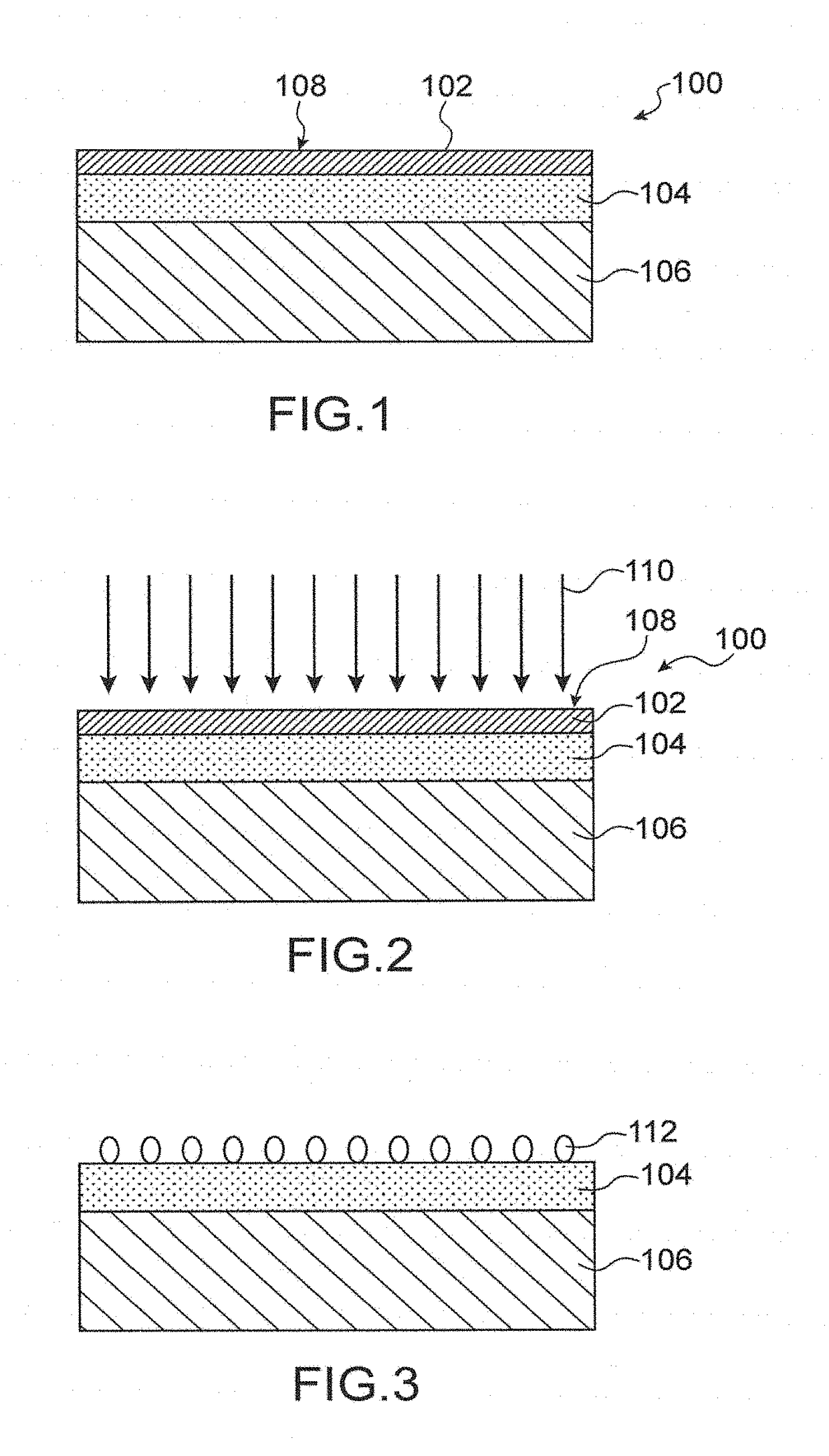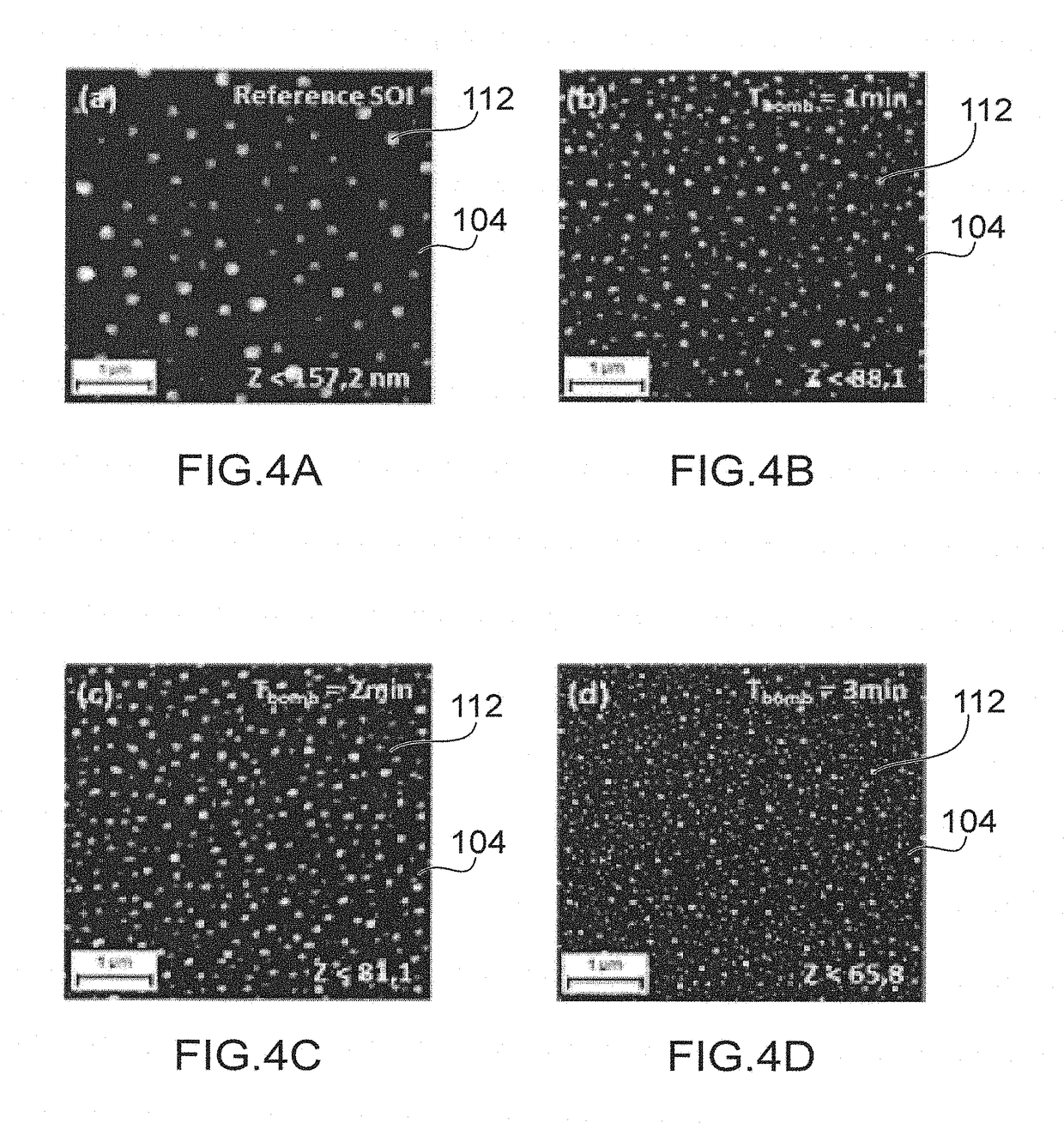Method for producing nanocrystals with controlled dimensions and density
a nanocrystal and density control technology, applied in the direction of semiconductor/solid-state device manufacturing, basic electric elements, electric devices, etc., can solve the problems of reducing the thickness of the thin layer of semiconductor, unable to achieve large homogeneous surfaces in terms of thickness, and not being able to obtain particles of small dimensions
- Summary
- Abstract
- Description
- Claims
- Application Information
AI Technical Summary
Benefits of technology
Problems solved by technology
Method used
Image
Examples
Embodiment Construction
[0009]There thus exists a need to propose a method for producing nanocrystals of semiconductor making it possible to reduce the dimensions of the nanocrystals and to increase the surface density with which the nanocrystals are distributed, which is notably compatible with obtaining nanocrystals of dimensions for example less than around 50 nm, without having to implement thinning of the thin layer of semiconductor to dewet to obtain a thickness that depends on the desired dimensions for the nanocrystals, add carbon species to the thin layer of semiconductor or induce a stress in the thin layer of semiconductor.
[0010]To do so, an embodiment proposes a method for producing nanocrystals, or nanoparticles, of semiconductor, comprising at least the implementation of the following steps:[0011]ion bombardment, or implantation, of a thin layer of semiconductor arranged on at least one dielectric layer, achieving an implantation of ions of at least one chemical element of rare gas type and / o...
PUM
| Property | Measurement | Unit |
|---|---|---|
| pressure | aaaaa | aaaaa |
| thickness | aaaaa | aaaaa |
| thickness | aaaaa | aaaaa |
Abstract
Description
Claims
Application Information
 Login to View More
Login to View More - R&D
- Intellectual Property
- Life Sciences
- Materials
- Tech Scout
- Unparalleled Data Quality
- Higher Quality Content
- 60% Fewer Hallucinations
Browse by: Latest US Patents, China's latest patents, Technical Efficacy Thesaurus, Application Domain, Technology Topic, Popular Technical Reports.
© 2025 PatSnap. All rights reserved.Legal|Privacy policy|Modern Slavery Act Transparency Statement|Sitemap|About US| Contact US: help@patsnap.com



